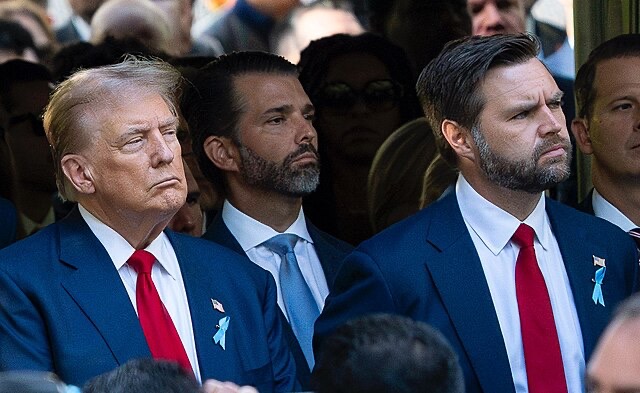The United States has secured just two trade agreements as President Donald Trump’s 90-day tariff pause expires Wednesday, falling far short of the administration’s ambitious “90 deals in 90 days” promise and leaving global markets bracing for potential economic disruption.
With 88 days elapsed since the April 9 pause announcement, Washington has finalized only tentative agreements with the United Kingdom and Vietnam, along with a preliminary framework with China, as negotiations with major trading partners including the European Union remain unresolved.
Treasury Secretary Scott Bessent warned Sunday that countries failing to reach agreements would see tariffs “boomerang” back to their April 2 “Liberation Day” levels on August 1, adding a new layer of uncertainty to an already volatile situation.
EU Negotiations Face ‘Disappointment’
European negotiators expressed “disappointment” Friday after being informed that the United States is contemplating 17% tariffs on EU agricultural products, according to sources familiar with the Brussels meeting.
The proposed agricultural tariffs would add to existing levies of 25% on automobiles, 50% on steel and aluminum, and a general 10% tariff on most other products from the 27-nation bloc.
We acknowledge that some student-athletes were disadvantaged by these rules,” a European Commission spokesperson stated, using diplomatic language to describe what Brussels officials privately call an “asymmetrical” relationship.
The EU exported €48 billion in agricultural products to the United States last year, making the sector particularly vulnerable to Trump’s protectionist measures.
‘Boomerang’ Effect Set for August
President Trump’s going to be sending letters to some of our trading partners saying that if you don’t move things along, then on August 1 you will boomerang back to your April 2 tariff level,” Bessent told CNN’s “State of the Union.
The Treasury Secretary insisted this was not a new deadline but rather the implementation of previously announced measures.
“We are saying this is when it’s happening. If you want to speed things up, have at it. If you want to go back to the old rate, that’s your choice,” Bessent stated.
Commerce Secretary Howard Lutnick confirmed Sunday that multiple trade agreements were nearing completion, though specific details remained scarce.
Letters Replace Negotiations
Trump announced Friday that his administration would send tariff notification letters to “10 or 12 countries” on Monday, marking a shift from comprehensive negotiations to unilateral rate-setting.
“The letters are better… much easier to send a letter,” Trump told reporters aboard Air Force One, acknowledging the difficulty of completing multiple trade deals simultaneously.
The president suggested tariff rates could range from “10 and 20%” to “up to 60 and 70%,” though Bessent clarified that major trading partners would not face the highest rates.
Vietnam Deal Sets Precedent
The agreement with Vietnam offers insight into Trump’s negotiating approach, with Hanoi accepting a 20% tariff on all exports to the United States – double the universal rate but less than half the initially threatened 46%.
“It’s extremely one-sided. We get to apply a significant tariff to Vietnamese exports. They’re opening their markets to ours, applying zero tariff to our exports,” said White House economic adviser Stephen Miran.
The deal requires Vietnam to reduce the flow of Chinese goods transshipped through the country to avoid U.S. tariffs.
Japan Faces Pressure
Trump criticized Japan’s “tough” negotiating style last week, threatening tariffs of “30%, 35%, or whatever amount we determine” while pressuring Tokyo to increase rice imports from the United States.
In other words, we’ll just be sending them a letter, and we love having them as a Trading Partner for many years,” Trump posted on Truth Social, signaling frustration with the pace of negotiations.
South Korean trade minister Yeo Han-koo met with U.S. Trade Representative Jamieson Greer on Saturday as Seoul scrambled to avoid higher tariffs.
European Countermeasures Ready
The EU has approved retaliatory tariffs on €21 billion of U.S. exports effective July 14 and is preparing an additional package valued at €95 billion targeting aircraft and food products.
European Commission President Ursula von der Leyen warned of “EU trade bazooka measures” if negotiations fail, though she acknowledged that any initial agreement would likely be incomplete.
Germany, Belgium, and Hungary – countries with significant automotive manufacturing interests – appear willing to accept a more unbalanced deal to end uncertainty, diplomatic sources suggest.
Market Impact Continues
The transatlantic trade relationship represents €870 billion annually, with products worth €2.4 billion crossing the Atlantic daily in 2024.
Stock futures declined Friday following Trump’s announcement about the tariff letters, reflecting ongoing market nervousness about the trade dispute’s resolution.
We have lost two brave public servants who sought only to keep peace in our City,” said former Treasury Secretary Larry Summers on ABC, warning that tariffs would increase inflation and reduce American competitiveness.
Small Countries Face Letters
Bessent confirmed that approximately 100 letters would be sent to smaller trading partners where the United States “doesn’t have very much trade.
Many of these countries never even contacted us,” the Treasury Secretary noted, adding that most would remain at the baseline 10% rate.
The administration’s initial confidence that dozens of countries would eagerly negotiate has given way to a more confrontational approach as the deadline approaches.
Everybody wants to make a deal,” Trump claimed in late June, though results suggest otherwise as major partners resist U.S. demands.
Follow for more updates on Britannia Daily



